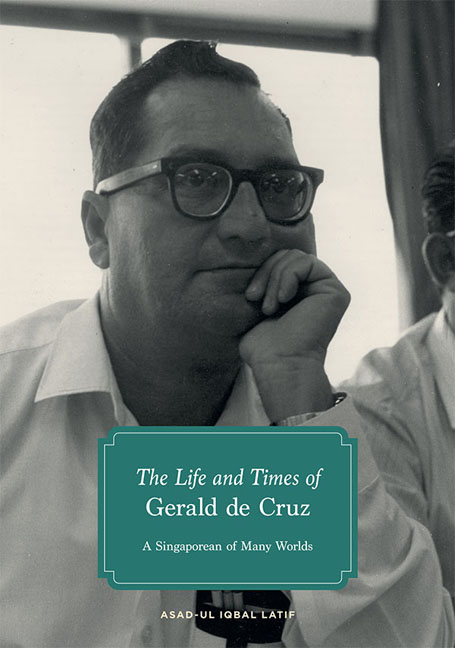Book contents
- Frontmatter
- Dedication
- Contents
- Preface
- Family Tree: Gerald Evelyn de Cruz
- 1 Don de Cruz de la Singapura
- 2 Childhood and Youth
- 3 The Japanese Occupation
- 4 The Communist Years
- 5 Going Abroad
- 6 The English Years
- 7 Return to Singapore
- 8 The Political Thinker
- 9 Friend of Labour
- 10 The Columnist
- 11 The Family Man
- Appendix
- Index
- About the Author
- Plate section
4 - The Communist Years
Published online by Cambridge University Press: 19 May 2017
- Frontmatter
- Dedication
- Contents
- Preface
- Family Tree: Gerald Evelyn de Cruz
- 1 Don de Cruz de la Singapura
- 2 Childhood and Youth
- 3 The Japanese Occupation
- 4 The Communist Years
- 5 Going Abroad
- 6 The English Years
- 7 Return to Singapore
- 8 The Political Thinker
- 9 Friend of Labour
- 10 The Columnist
- 11 The Family Man
- Appendix
- Index
- About the Author
- Plate section
Summary
The Malayan Communist Party, formed in Singapore in 1930 to establish a Malayan Republic under communist rule, paved the way for an anti-colonial movement in Malaya and Singapore. The MCP's immediate intellectual origins lie at least as far back as the May Fourth movement of 1919, when Chinese students protested against their government's weak response to the way China had been dealt with in the Treaty of Versailles that had ended World War I. The student demonstrations, which were directed also against Japan and the Western powers, broadened into a critique of the feudal past that held the modern Chinese mind in chains. This intellectual and ideological ferment, which reshaped the Kuomintang and gave rise to the Chinese Communist Party, became the “seedtime of the radical tradition” that took root among the Chinese-educated in Singapore and “blossomed forth as the Malayan Communist Party”.
However, the MCP was also a local organization, its birth linked to widening nationalist sentiments in Malaya. The legendary Vietnamese leader Ho Chi Minh, who was instrumental in setting up the MCP, was keenly aware that to succeed it would have to act as a genuinely Malayan organization and not an appendage of the Chinese Communist Party. A proletarian revolution could not take place in Malaya without the participation of Malays and Indians, who hardly were likely to be attracted to any party identified closely with China. Acutely conscious of the racial divide in Malaya that would affect proletarian solidarity, Ho advised the leaders of the MCP, dominated by the ethnic Chinese, to learn Malay and reach out to Malays and Indians. Gerald de Cruz's membership of the party is significant in this regard. English-educated and non-Chinese, he was among those members of the intelligentsia who acted as a bridge between the Chinese-educated leadership of the MCP and the wider, multiracial world of Singapore.
The MCP gained significant Chinese support after 1936 by articulating labour discontent and Chinese patriotism stirred by the Sino–Japanese War.
- Type
- Chapter
- Information
- The Life and Times of Gerald de CruzA Singaporean of Many Worlds, pp. 32 - 76Publisher: ISEAS–Yusof Ishak InstitutePrint publication year: 2015

